#First Peoples
Text
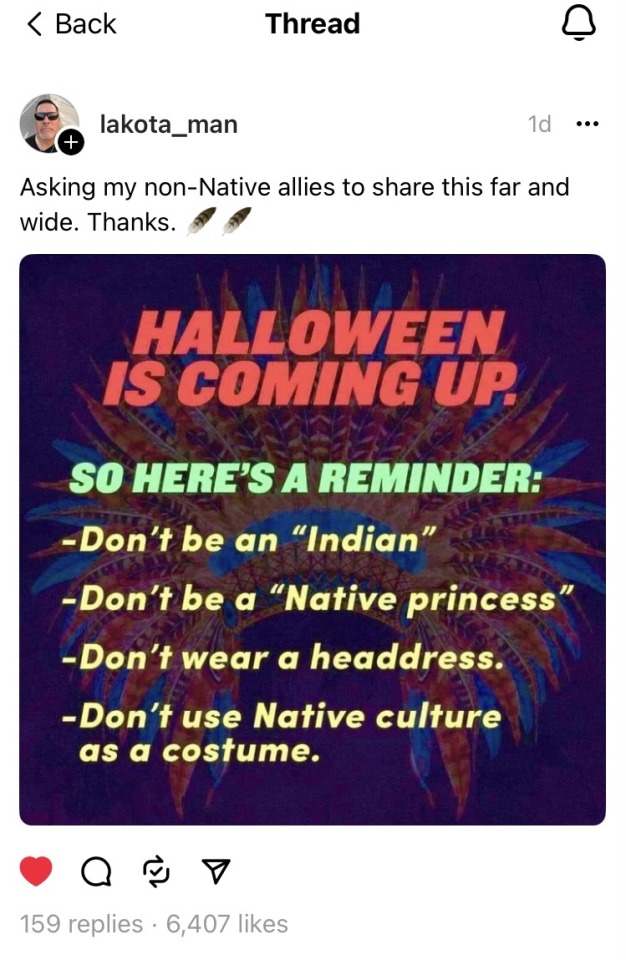
#threads#threads app#threads account#threads an instagram app#leftism#leftist#left wing#indigenous#indigenous rights#indigenous people#halloween#happy halloweeeeeeen#costume#halloween season#halloween costumes#halloween stuff#first peoples#native american#socialist#socialism
388 notes
·
View notes
Photo



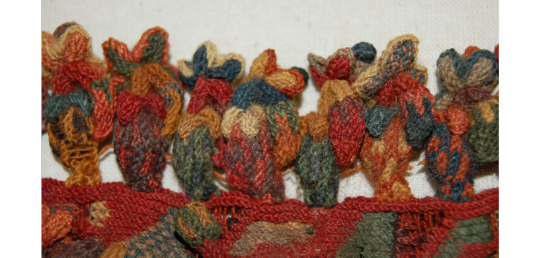
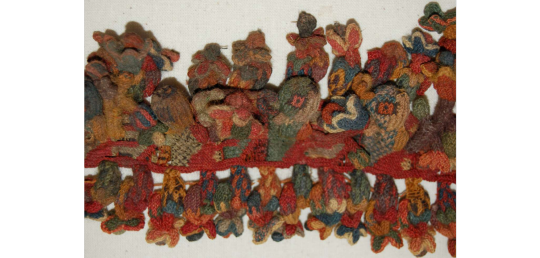
textile
Cultures/periods: Nasca
Production date: 100-400
Made in: Peru
Provenience unknown, possibly looted
Funerary mantle fragments; cross knit loop stitch; camelid fibre; row of knitted birds alternating with flower motifs along the centre with flower motifs along each edge; mutli-coloured: reds, greens, blues, browns.
British Museum
185 notes
·
View notes
Link
It’s really unfortunate that National Geographic’s paywall will prevent most of you from accessing this story and reading about growing assertions of sovereignty from the Indigenous peoples of the US and Canada. (This exclusion of a big chunk of North America raises the issue of the Indigenous peoples of Mexico and Central America. I really know very little about this. Note to self: fix that.) Anyway, the story is really good, and as usual with National Geographic, the photos are awesome. I’m going to post some of the photos with the captions from the story, which might help a bit. All photos by Bykiliii Yüyan.
About climate change, the biodiversity crisis, ecological and environmental disasters all over the place, I have a solution: Return all this to the Indigenous peoples and learn from them.
This first photo is placed at the beginning of the story, and is so captivating it pushed me into the rest of the story.

Quannah Rose Chasinghorse, a groundbreaking Indigenous model, uses her fame to support her activism, reminding people “whose land you’re living on.” Native sovereignty, she says, is key to “defending my ways of life, trying to protect what’s left.” She is Hän Gwich’in and Sičangu/Oglala Lakota, but was born on Diné (Navajo) land in Arizona. Here, Chasinghorse stands in Tse’Bii’Ndzisgaii (Monument Valley), a park administered by the Diné.
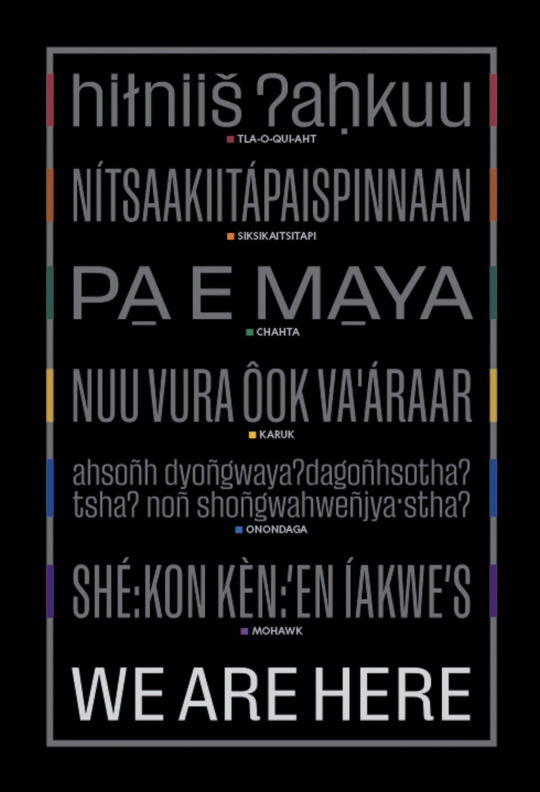

This totem pole will rise in the village of Opitsaht on Meares Island to commemorate the Tla-o-qui-aht’s recent history. The skulls (at far right) symbolize victims of COVID-19, students who died in residential schools, and murdered and missing Indigenous women. “When the Europeans came, they said we were illiterate,” explains Joe Martin, the master carver who is overseeing the pole’s creation. “But so were they—they couldn’t read our totem poles.”
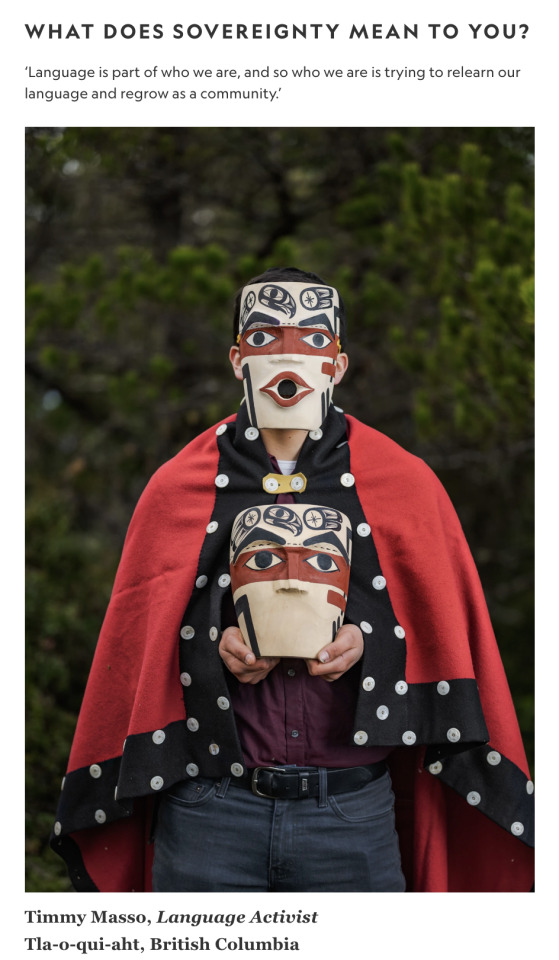
Highlighting the recovery of Nuu-chah-nulth, the Tla-o-qui-aht tongue, Masso displays two masks—one with no mouth to symbolize the loss of the language, one with an open mouth to show its revival. Beginning in the 1830s, Canada forced about 150,000 Indigenous children into residential schools and forbade them to use their mother tongues, which nearly put an end to them. Masso wrote a song and his brother, Hjalmer Wenstob, carved these masks for a performance they created to promote learning Nuu-chah-nulth—a vital part of reestablishing Tla-o-qui-aht culture.

The McGirt Decision is a hot-button issue in the state, and Hill now spends much of her time wrestling with the consequences, including what it means for the Cherokee Nation’s sovereignty. “I tend to think about it in terms of not only preserving what was,” she says, “but the right to be a separate people with a separate destiny.” For her, that means the tribe’s descendants creating their own future. “People took away Cherokee children for a century, putting them in boarding schools so they could become what others wanted them to be.”
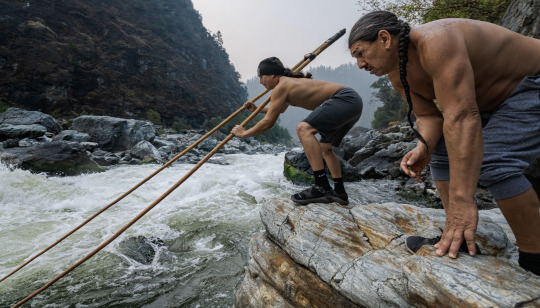
With a dip net, Karuk fisherman Ryan Reed searches for Chinook salmon under the watchful eye of his father, Ron, on California’s Klamath River at Ishi Pishi Falls. The Reeds caught no fish—in stark contrast to earlier times. Before California became a state, the river saw about 500,000 salmon each fall, but last year just 53,954 mature Chinook swam up, a 90 percent decline. The nation now restricts salmon fishing to Ishi Pishi Falls, but with the slated removal of four dams, the Karuk hope the salmon will return.
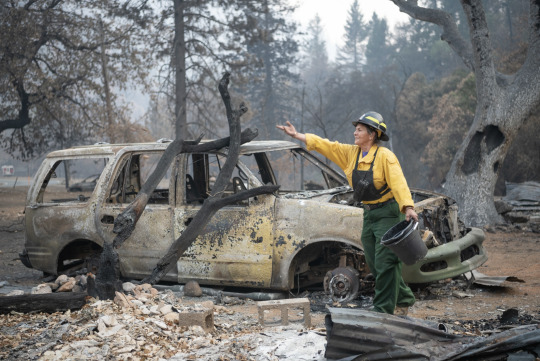
Kathy McCovey, a Karuk tribal member, tosses black oak acorns to reseed her land in Happy Camp, California, after a wildfire destroyed her retirement home. A former U.S. Forest Service anthropologist, McCovey belongs to a Karuk team that sets controlled fires to reduce underbrush, the fuel for future fires. Last year California expanded the use of prescribed burns, an important victory for Native peoples.
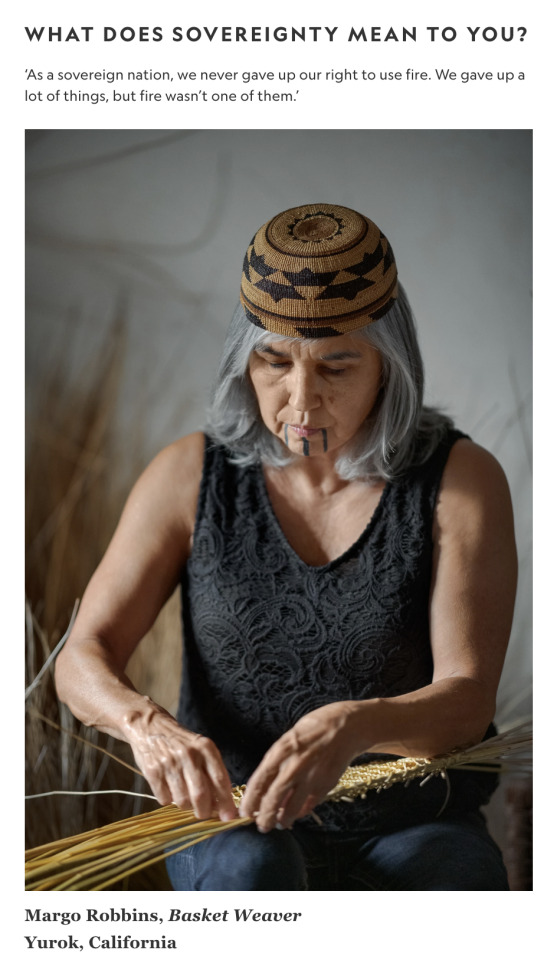
As she grew up, Robbins watched U.S. fire suppression policies transform the forests around her into monocultures of Douglas fir that no longer sustained species important to the Yurok people. Particularly painful was the loss of new hazel shoots, essential to making baskets, caps, and, especially, cradles. Not wanting to see her grandchildren raised without Yurok cradles, she co-founded the Indigenous Peoples Burning Network, which teaches fire-setting techniques to maintain the landscape as her ancestors did.

Angela Ferguson [ of the Onondaga, who are one of the six nations of the Haudenosaunee (Iroquois Confederacy)], whose homelands are in what is now upstate New York and southern Ontarioworks with Indigenous colleagues to bring back varieties of corn nearly lost to colonization and industrialization. For Native people wanting to make a statement, she says, “the biggest protest you can make is to put one of your seeds in the ground.”
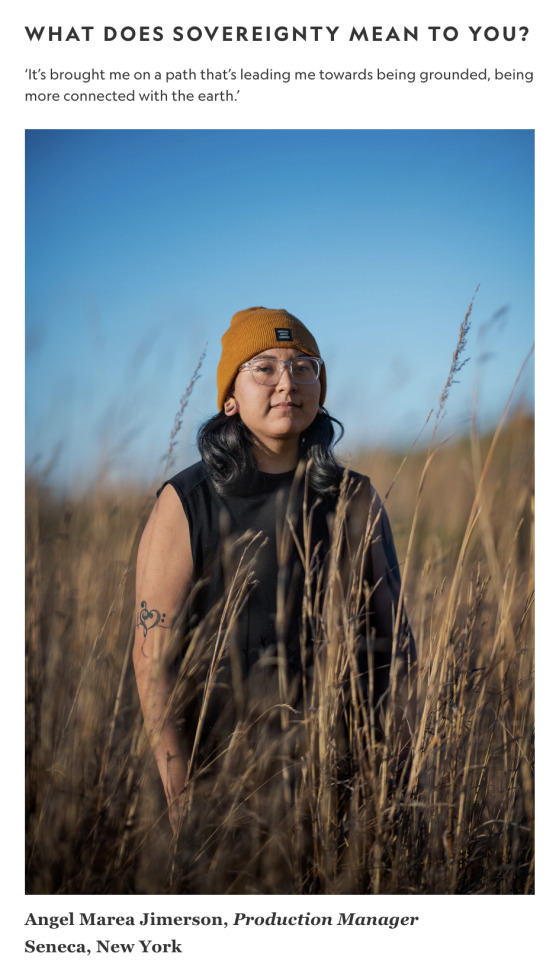
Corn was a staple of the Haudenosaunee diet, and Jimerson hopes the Iroquois White Corn Project at the Ganondagan State Historic Site in New York, where the Seneca had a town in the 17th century, will restore that role. Founded in the 1990s, the project hand-raises and hand-processes white corn. As a young Native American, Jimerson says they struggled in their early years but found their purpose working with their cultural heritage, learning patience, resourcefulness, gratitude, and mindfulness.
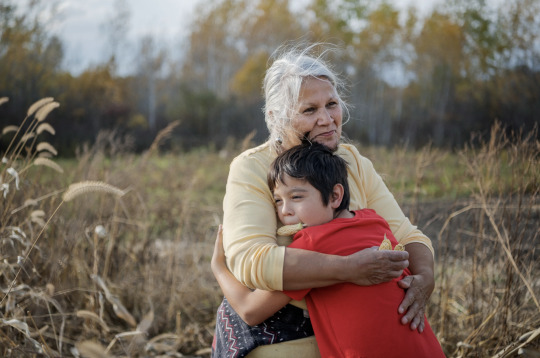
Katsi Tekatsi:tsia’kwa Cook embraces her grandson Karakwatiron during the corn harvest at her family farm in Akwesasne, New York. Raised in a prominent Mohawk (Kanien’kehá:ka) family, she became a midwife in the late 1970s and helped found the Birthing Centre of Six Nations Health Services in Ontario. By integrating traditional customs with modern protocols, she says, Indigenous midwifery plays a role in revitalizing Mohawk culture.
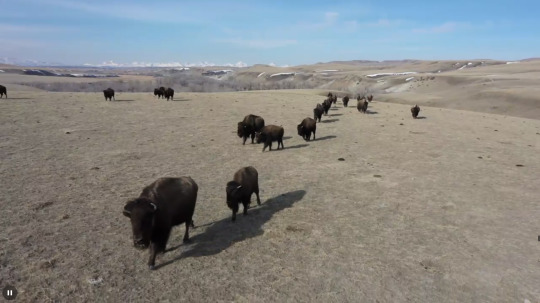
The Siksikaitsitapi have raised buffalo in Montana since the mid-1970s, but systematic restoration began there only in 2009 on the Blackfeet Indian Reservation. Today they have almost a thousand animals, and meat is available at the reservation grocery. But to buffalo program director Ervin Carlson, the larger goal is to re-create Siksikaitsitapi landscapes—ecosystems teeming with free-ranging buffalo.
790 notes
·
View notes
Text
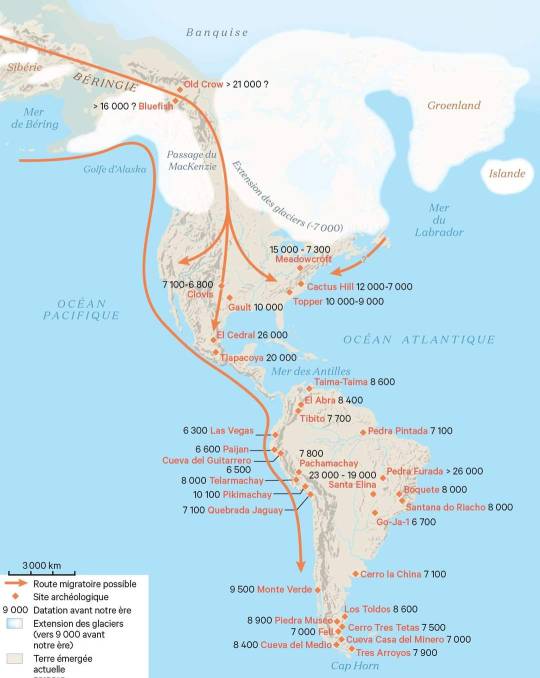
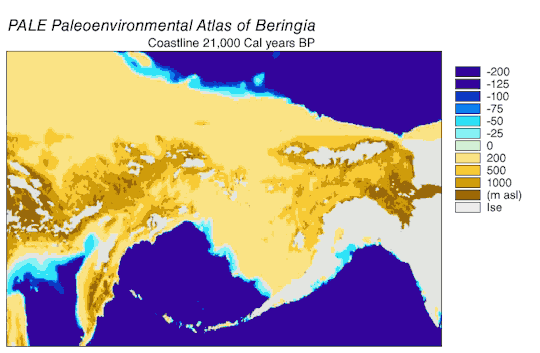
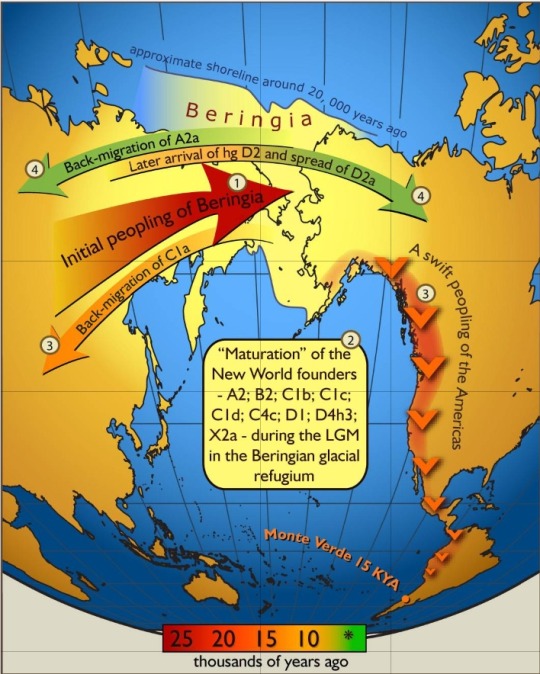
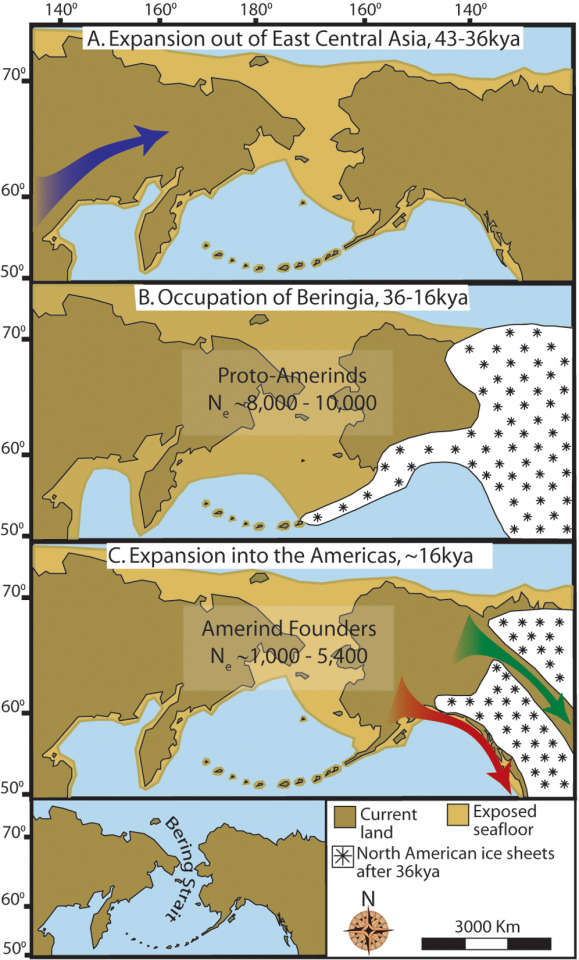

Some maps showing the probable peopling of the Americas.
#paleoanthropology#archaeology#first peoples#native american#beringia#nivkh#dna#haplogroups#meadowcroft
13 notes
·
View notes
Text
Australia rejects proposal to recognise Aboriginal people in constitution
17 notes
·
View notes
Photo

Nona Aquan, Carib Trinidadian
#Nona Aquan#Carib#Trinidad#Trinidad and Tobago#Trinidadian#Tobago#Caribbean#West Indies#Indigenous#First Peoples#West Indian#Arima#Arima's First Peoples#Indigenous Caribbean#Native Trinidadian#Native Caribbean
102 notes
·
View notes
Text

Vote YES and lets recognise the first Peoples of Australia 💛🖤❤️
10 notes
·
View notes
Text
hello dear followers and friends,
some of you may be aware that i homeschool. this year, we're studying American history. we're currently reading historic fiction about a Mayan boy in the Yucatán peninsula, and one about an Iroquois boy in what is now New York. one of my sons told me tonight that the cultural stories and myths that keep being mentioned sound really interesting, and so I'm reaching out to tumblr (feel free to signal boost).
do you know of single short stories, anthologies, novels, etc. written by Native Americans/First People groups? I'm specifically looking for recorded oral traditions and myths that each specific group is comfortable sharing outside of their tribes or communities. any websites, books, or magazines would be helpful! i'd also love for any articles or essays on why some myths or stories AREN'T shared with outsiders and how to be respectful when asking for someone else's stories.
right now, we're reading about Iroquois and Mayan, but one of my kids is also working on reading a book about a Nez Perce girl, and we'll be covering many others this year!
(and please feel free to ignore if you don't have spoons for this. if you do have energy and time to respond, thank you SO much for that! 💜)
121 notes
·
View notes
Video
youtube
Cave Art Shocker: Denisovans Did It? (Or Did They?)
via World of Paleoanthropology
#youtube#Cave Art#Denisovans#The Paleo Post Podcast#First Peoples#Ancient Ways#world of paleoanthropology#paleoanthropology#Cave Art Shocker#Denisovan Did It? (Or Did They?)
2 notes
·
View notes
Text
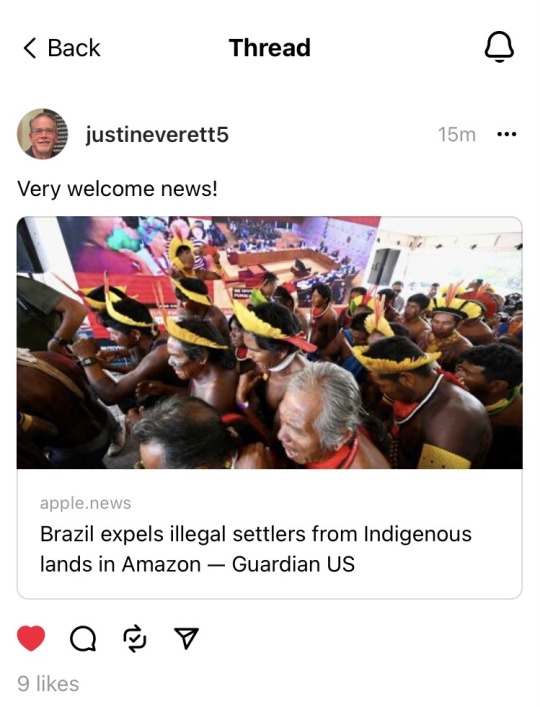
#threads#threads app#threads account#threads an instagram app#threads post#good news#great news#decolonialism#decolonisation#decolonize#decolonization#brazil#indigenous#indigenous rights#native rights#first peoples#leftist#leftisim#leftism#news#international news#amazon#climate news#good climate news#environmental news#first nations
49 notes
·
View notes
Text
This is your friendly reminder that the US state Oklahoma was named after a slur. I'm not kidding. You know how white people in westerns always called Natives "redskin," in a way that makes it obvious it's a slur in hindsight? Well the literal translation for Oklahoma's name is "Red People".
2 notes
·
View notes
Photo

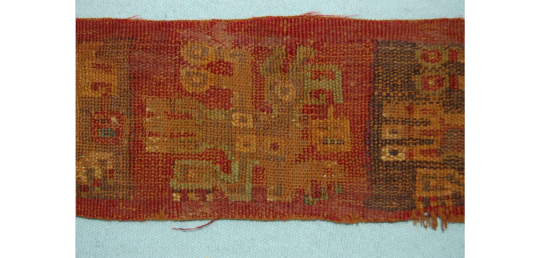

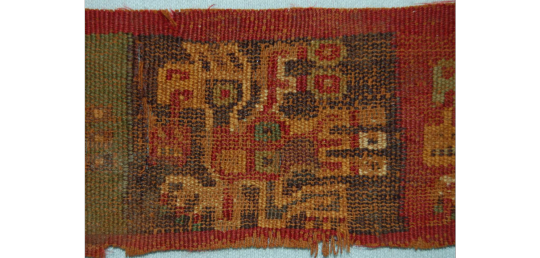
textile
Cultures/periods: Tiahuanaco (?)
Production date: 600-900
Made in: Peru
Provenience unknown, possibly looted
Textile fragment; cotton warps with camelid fibre wefts; tapestry (?); segemented design; row of bird (or llama?) figures on coloured rectangular backgrounds, each dangling a trophy head from the mouth; red, green, indigo, browns and white.
British Museum
63 notes
·
View notes
Quote
"When the Europeans came, they said we were illiterate. But so were they—they couldn’t read our totem poles."
Joe Martin, the master carver who is overseeing the creation of this totem pole, a Tla-o-qui-aht artist on the west coast of Vancouver Island, in British Columbia. From the June 14, 2022 edition of National Geographic.
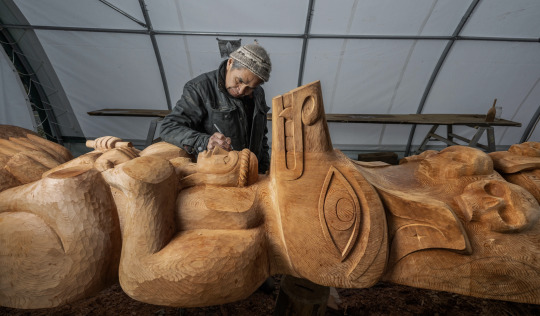
144 notes
·
View notes
Text
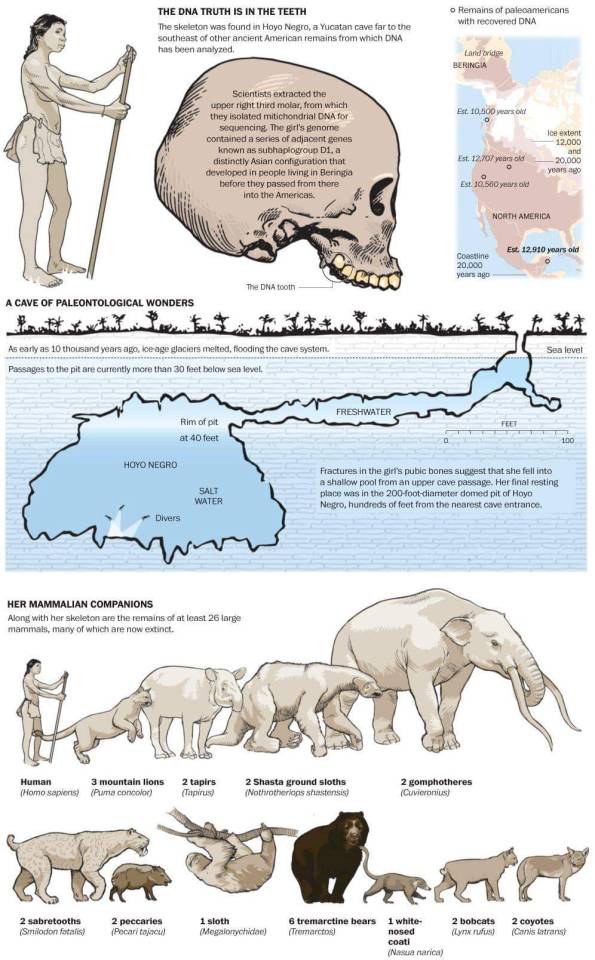
This post is about a Paleoamerican skeleton found in the Yucatan.
"In pre-Mayan Mexico, a slender, bucktoothed 15- or 16-year-old girl fell into a flooded, underground cavern about 12,000 years ago. She was a Paleoamerican, with features more akin to Africans and Southeast Asians than modern Native Americans. DNA collected from one of her molars reveals a direct connection to the people who crossed the Bering land bridge from Siberia more than 18,000 years ago. The discovery greatly extends the range of DNA information about Paleoamericans." Credit: The Washington Post.
8 notes
·
View notes
Text
The bizarre accidental discovery of butchered 37,000-year-old New Mexico mammoth bones on a Texas professor’s land has upended the once prevailing Clovis First theory.
#New Mexico#mammoth#bones#Clovis#Upper Paleolithic#indigenous#first peoples#ancient#history#ancient origins
73 notes
·
View notes
Text
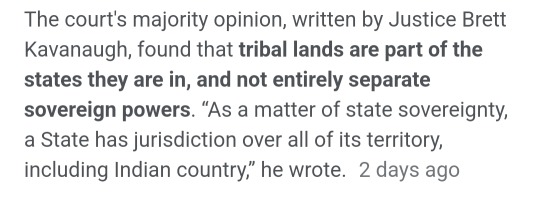
Meanwhile:

There is nothing more American than stealing land and sovereignty from First Peoples.
63 notes
·
View notes